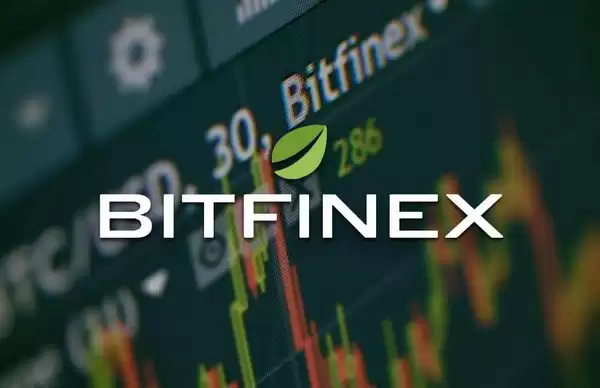-
 Bitcoin
Bitcoin $115200
1.46% -
 Ethereum
Ethereum $3672
2.95% -
 XRP
XRP $3.004
1.51% -
 Tether USDt
Tether USDt $1.000
0.04% -
 BNB
BNB $772.6
3.15% -
 Solana
Solana $168.2
3.14% -
 USDC
USDC $0.9998
-0.01% -
 TRON
TRON $0.3365
1.44% -
 Dogecoin
Dogecoin $0.2053
3.66% -
 Cardano
Cardano $0.7414
2.80% -
 Hyperliquid
Hyperliquid $38.30
0.43% -
 Stellar
Stellar $0.3983
0.73% -
 Sui
Sui $3.496
3.19% -
 Bitcoin Cash
Bitcoin Cash $571.4
4.49% -
 Chainlink
Chainlink $16.75
2.91% -
 Hedera
Hedera $0.2440
2.21% -
 Ethena USDe
Ethena USDe $1.001
0.03% -
 Avalanche
Avalanche $22.18
2.14% -
 Litecoin
Litecoin $120.6
0.40% -
 UNUS SED LEO
UNUS SED LEO $8.991
0.05% -
 Toncoin
Toncoin $3.229
-0.62% -
 Shiba Inu
Shiba Inu $0.00001234
3.28% -
 Uniswap
Uniswap $9.757
3.45% -
 Polkadot
Polkadot $3.666
2.22% -
 Dai
Dai $1.000
0.01% -
 Monero
Monero $282.3
-4.49% -
 Bitget Token
Bitget Token $4.360
1.80% -
 Cronos
Cronos $0.1437
6.19% -
 Pepe
Pepe $0.00001050
4.21% -
 Aave
Aave $263.0
4.02%
Bitfinex contract trading guide
Contract trading on Bitfinex offers traders diverse contracts, advanced risk management tools, and the potential for significant profits with responsible leverage use.
Nov 11, 2024 at 04:10 am

Bitfinex Contract Trading Guide: A Comprehensive Overview for Beginners
In the realm of digital asset trading, contract trading has emerged as a popular and lucrative avenue for investors seeking to capitalize on market fluctuations. Among the leading exchanges offering contract trading services is Bitfinex, renowned for its advanced platform and diverse trading instruments. This guide is designed to provide a comprehensive overview of contract trading on Bitfinex, empowering traders of all levels with the knowledge and skills necessary to navigate this dynamic market successfully.
Steps Involved in Contract Trading on Bitfinex:
- Creating an Account and Funding:
To commence contract trading on Bitfinex, you must first create an account on the platform. This involves providing personal and financial information, undergoing identity verification, and funding your account with the desired cryptocurrency. Bitfinex supports deposits in various cryptocurrencies, including Bitcoin (BTC), Ethereum (ETH), and Tether (USDT).
- Choosing a Contract and Setting Parameters:
Bitfinex offers a wide range of perpetual futures contracts, allowing traders to speculate on the price movements of underlying cryptocurrencies. Each contract has its own unique specifications, including the underlying asset, contract size, and trading fees. Traders should carefully consider their trading goals and risk tolerance when selecting a contract.
Once a contract is selected, traders must set the parameters of their trade. This includes specifying the order type, order size, and leverage (if desired). Bitfinex offers a variety of order types, including limit orders, market orders, and stop-limit orders. Leverage allows traders to amplify their trading positions, but it also increases the potential for both profit and loss.
- Opening and Managing Positions:
After setting the trade parameters, traders can open a position by placing an order. The order book displays the current bid and ask prices for the selected contract, and traders can choose to execute their orders at the market price or a specific price.
Once a position is open, traders can monitor its performance and make adjustments as needed. Bitfinex provides real-time charts and market data, enabling traders to track price movements and make informed trading decisions. Traders can also add or remove leverage, adjust the take-profit and stop-loss levels, and close positions whenever desired.
- Closing Positions and Settling Trades:
Positions can be closed at any time by placing an opposite order. For instance, a long position can be closed by placing a short order of the same size. The difference between the opening and closing prices determines the profit or loss on the trade.
Trades are settled in the underlying cryptocurrency, and the profits or losses are credited or debited to the trader's account. Bitfinex offers both physical and cash settlements, providing traders with flexibility in how they receive their payouts.
- Risk Management and Trading Strategies:
Contract trading involves significant risk, and effective risk management is crucial for protecting capital. Bitfinex provides various tools and features to help traders manage risk, including margin calls, stop-loss orders, and liquidation mechanisms. Traders should always conduct thorough research, understand the dynamics of the market, and implement a risk management strategy that aligns with their financial objectives.
- Leverage Use and Associated Risks:
Leverage can be a powerful tool for magnifying profits, but it also magnifies losses. Traders should use leverage cautiously and only to the extent that they can afford to risk. Excessive leverage can lead to substantial losses and even margin calls, where traders are forced to close their positions at unfavorable prices.
- Understanding Margin and Margin Calls:
Margin refers to the amount of funds required to maintain open positions. When using leverage, traders typically post a portion of the total position value as margin. Bitfinex calculates the maintenance margin, which is the minimum margin required to keep positions open. If the margin falls below the maintenance margin due to adverse price movements, the trader will receive a margin call and may be forced to close positions.
- Market Analysis and Trading Techniques:
Successful contract trading relies on sound market analysis and effective trading techniques. Traders should employ various technical analysis tools, such as chart patterns, indicators, and volume analysis, to identify trading opportunities. Additionally, understanding order flow and liquidity is crucial for making informed trading decisions.
Disclaimer:info@kdj.com
The information provided is not trading advice. kdj.com does not assume any responsibility for any investments made based on the information provided in this article. Cryptocurrencies are highly volatile and it is highly recommended that you invest with caution after thorough research!
If you believe that the content used on this website infringes your copyright, please contact us immediately (info@kdj.com) and we will delete it promptly.
- OZAK AI: Is This AI Product Poised for ChatGPT-Level Returns?
- 2025-08-07 03:30:13
- SEC, Liquid Staking, and Crypto: A New Dawn?
- 2025-08-07 03:30:13
- Bitcoin, Ozak AI, and Crypto Veterans: A New York Minute on What's Hot
- 2025-08-07 02:31:03
- KakaoBank Eyes Stablecoin Market: A New Era for Digital Assets in South Korea?
- 2025-08-07 02:31:03
- Ethereum's Scaling Saga: Gas Limits, Leadership, and the Road to 100M
- 2025-08-07 02:50:40
- Bitcoin Income Evolution: Decoding YBTC and the Future of Crypto Yield
- 2025-08-07 02:50:40
Related knowledge

Why is my Bitstamp futures position being liquidated?
Jul 23,2025 at 11:08am
Understanding Futures Liquidation on BitstampFutures trading on Bitstamp involves borrowing funds to open leveraged positions, which amplifies both po...

How to report Bitstamp futures for taxes?
Jul 30,2025 at 08:35am
Understanding Bitstamp Futures and Taxable EventsWhen trading Bitstamp futures, it’s essential to recognize that these financial instruments are treat...

Does Bitstamp offer inverse contracts?
Jul 23,2025 at 01:28pm
Understanding Inverse Contracts in Cryptocurrency TradingIn the realm of cryptocurrency derivatives, inverse contracts are a specific type of futures ...

What is the difference between futures and perpetuals on Bitstamp?
Jul 27,2025 at 05:08am
Understanding Futures Contracts on BitstampFutures contracts on Bitstamp are financial derivatives that allow traders to speculate on the future price...

How to find your Bitstamp futures trade history?
Jul 23,2025 at 08:07am
Understanding Bitstamp and Futures Trading AvailabilityAs of the current state of Bitstamp’s service offerings, it is critical to clarify that Bitstam...

Can I use a trailing stop on Bitstamp futures?
Jul 23,2025 at 01:42pm
Understanding Trailing Stops in Cryptocurrency TradingA trailing stop is a dynamic type of stop-loss order that adjusts automatically as the price of ...

Why is my Bitstamp futures position being liquidated?
Jul 23,2025 at 11:08am
Understanding Futures Liquidation on BitstampFutures trading on Bitstamp involves borrowing funds to open leveraged positions, which amplifies both po...

How to report Bitstamp futures for taxes?
Jul 30,2025 at 08:35am
Understanding Bitstamp Futures and Taxable EventsWhen trading Bitstamp futures, it’s essential to recognize that these financial instruments are treat...

Does Bitstamp offer inverse contracts?
Jul 23,2025 at 01:28pm
Understanding Inverse Contracts in Cryptocurrency TradingIn the realm of cryptocurrency derivatives, inverse contracts are a specific type of futures ...

What is the difference between futures and perpetuals on Bitstamp?
Jul 27,2025 at 05:08am
Understanding Futures Contracts on BitstampFutures contracts on Bitstamp are financial derivatives that allow traders to speculate on the future price...

How to find your Bitstamp futures trade history?
Jul 23,2025 at 08:07am
Understanding Bitstamp and Futures Trading AvailabilityAs of the current state of Bitstamp’s service offerings, it is critical to clarify that Bitstam...

Can I use a trailing stop on Bitstamp futures?
Jul 23,2025 at 01:42pm
Understanding Trailing Stops in Cryptocurrency TradingA trailing stop is a dynamic type of stop-loss order that adjusts automatically as the price of ...
See all articles

























































































